Home Remodel Blog
10 Common Mistakes to Avoid with Tub to Shower Conversion Companies
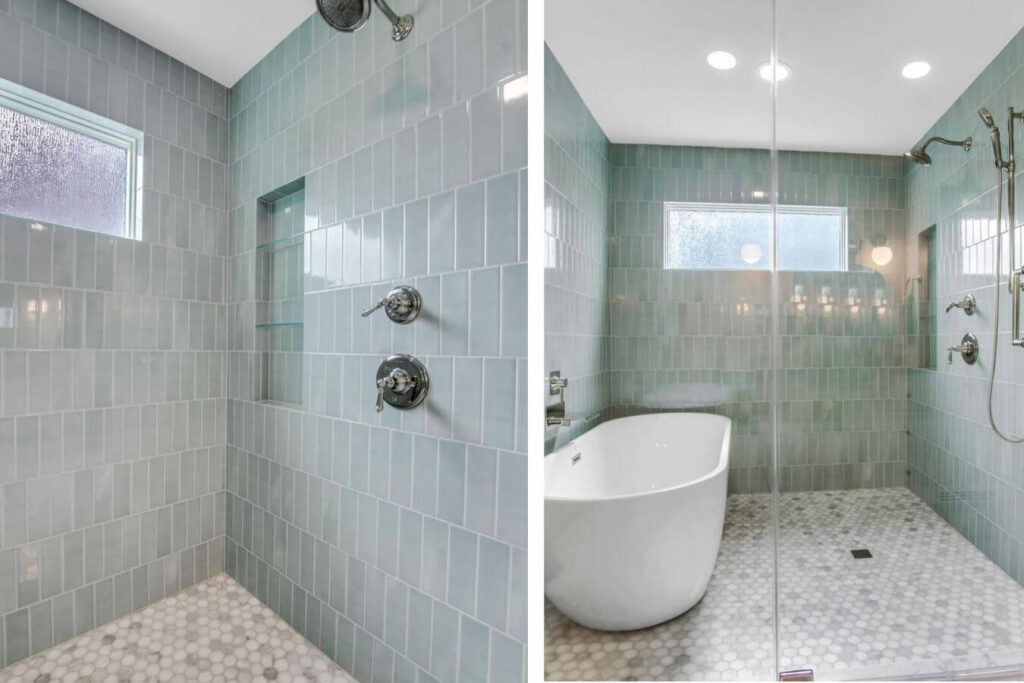
10 Common Mistakes to Avoid with Tub to Shower Conversion Companies
Thinking about transforming that old, unused tub into a sleek, modern shower? You’re not alone! A tub to shower conversion can significantly boost your bathroom’s functionality and style. However, before you dive into the renovation, it’s crucial to avoid common mistakes when working with tub to shower conversion companies that could turn your dream project into a nightmare. Let’s walk through the key pitfalls to sidestep and ensure your conversion journey is smooth and satisfying.
1. Choosing Incompatible Materials
Pitfall: Selecting materials that aren’t suitable for wet environments can lead to mold, mildew, and water damage. Imagine spending all that money, only to end up with a bathroom science experiment!
How to Avoid:
- Do Your Homework: Standard drywall isn’t moisture-resistant and can deteriorate quickly when exposed to water. Always opt for water-resistant or green board drywall in bathrooms. This is specifically designed for moisture-prone areas. Even moisture-resistant wallpaper can peel and become a breeding ground for mold in the wet environment of a shower.
- Ask Questions: Don’t just take the word of tub to shower conversion companies. Ask them to explain why they recommend certain materials and verify their suitability for wet areas.
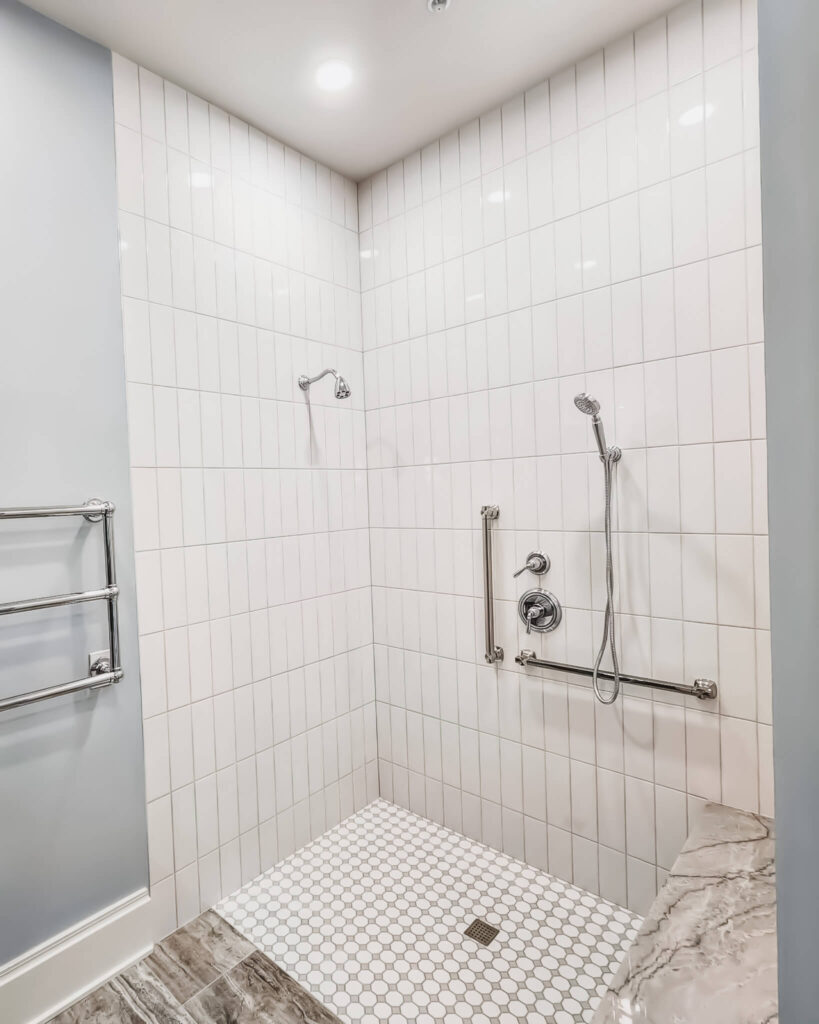
2. Incorrect Measurements and Unlevel Surfaces
Pitfall: Getting the measurements wrong can lead to leaks, improper fit, and wasted space. Picture your new shower leaking like a sieve – not fun!
How to Avoid:
- Double-Check: Make sure the conversion company measures the length, width, and height of the existing tub space accurately. Any deviation can cause misalignment and leaks. Uneven walls or floors can lead to improper fitting of shower components, causing leaks and poor drainage. Ensure these are checked and leveled if necessary.
- Hire Experienced Professionals: Choose tub to shower conversion companies with a proven track record. Experienced professionals are more likely to get the measurements right the first time and avoid common pitfalls.
3. Inadequate Waterproofing
Pitfall: Poor waterproofing can cause significant water damage, leading to costly repairs. Nobody wants their new shower to be a leaky disaster.
How to Avoid:
- Insist on Quality Waterproofing: Adequate waterproofing is essential for protecting your bathroom from moisture damage. Here’s what to look for:
- Waterproof Membranes: High-quality waterproof membranes, such as polyethylene or PVC liners, create a barrier that prevents water from penetrating into the building structure.
- Seam Sealing: Properly sealing seams and joints with waterproof tape or sealant ensures there are no gaps where water can seep through.
- Waterproofing Layers: Applying multiple layers of waterproofing material, especially in high-risk areas like shower floors and walls, provides added protection against leaks.
- Shower Pan Liner: Installing a shower pan liner beneath the tile or flooring is crucial to direct water to the drain and prevent it from leaking into the subfloor.
- Shower Curb Waterproofing: Waterproofing the shower curb or threshold is often overlooked but is critical to prevent water from leaking out onto the bathroom floor.
- Waterproof Membranes: High-quality waterproof membranes, such as polyethylene or PVC liners, create a barrier that prevents water from penetrating into the building structure.
- Inspect the Work: Before tiling or finishing the shower, visually inspect the waterproofing materials and techniques used. Look for evidence of thorough application and proper coverage to ensure effective protection against water damage.
- Professional Installation: Hire tub to shower conversion companies with expertise in waterproofing techniques specific to bathroom environments. Experienced professionals will understand the importance of waterproofing and apply it correctly to safeguard your investment.
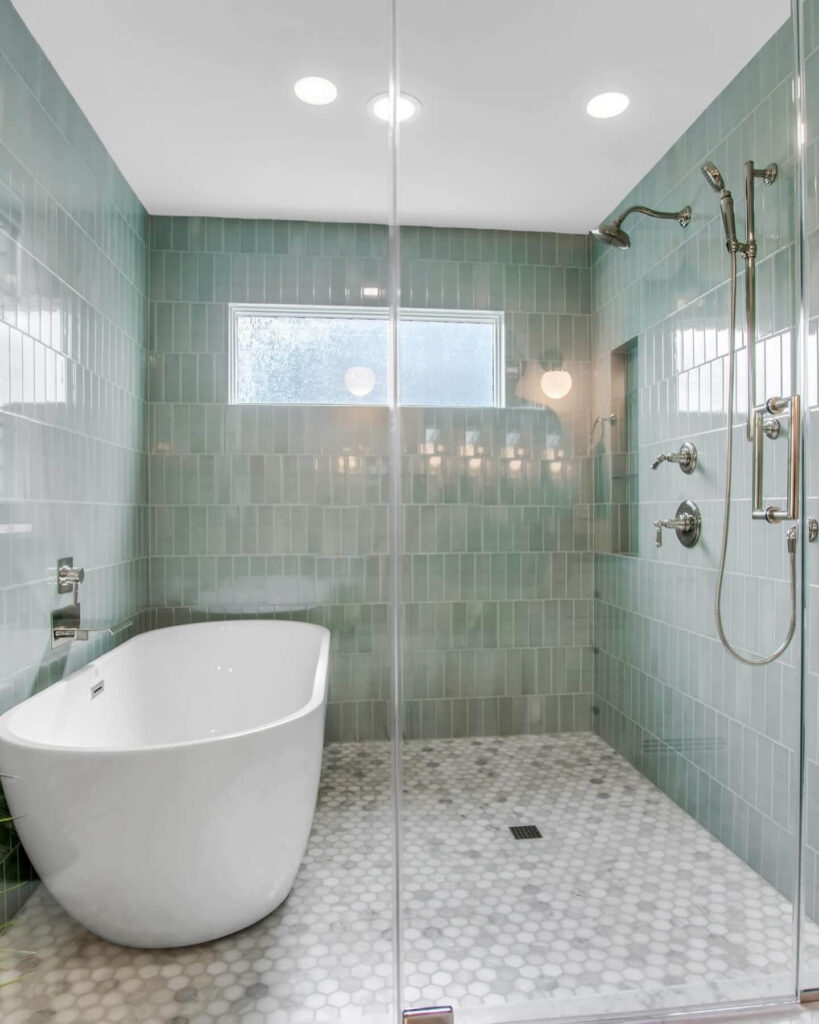
4. Not Accounting for Plumbing Adjustments
Pitfall: Overlooking necessary plumbing adjustments can lead to costly changes later in the project. Showers typically require a larger drain than a bathtub due to the increased volume of water that needs to be managed. Tub drains are smaller and may not adequately handle the flow from a shower without causing drainage issues.
How to Avoid:
- Plan Ahead: Plumbing lines for the bathtub may need to be adjusted to accommodate the new shower configuration. This can involve relocating or resizing drain lines, adjusting water supply lines, and ensuring proper ventilation.
- Get a Professional Assessment: Have a licensed plumber assess the current plumbing and discuss any necessary adjustments with tub to shower conversion companies. If your contractor is doing this as part of their service, make sure they have a plumbing certification.
- Budget for Changes: Include potential plumbing adjustments in your budget to avoid surprises.
5. Overlooking Ventilation Needs
Pitfall: Inadequate ventilation can lead to moisture buildup, mold, and mildew growth. You don’t want your new shower to turn into a moldy mess.
How to Avoid:
- Calculate Ventilation Requirements: A common rule of thumb is that bathrooms require ventilation that can exchange the air at least eight times per hour. Here’s how you can assess if your bathroom has adequate ventilation:
- Fan Capacity: A fan’s capacity is measured in cubic feet per minute (CFM). The higher the CFM rating, the more air the fan can move, which is beneficial for moisture removal.
- Room Size: Calculate the volume of your bathroom (length × width × height) to determine the airflow needed. For example, a bathroom with a volume of 100 cubic feet would ideally require a fan with a CFM rating of at least 80 (100 cubic feet × 8 exchanges per hour / 60 minutes).
- Fan Capacity: A fan’s capacity is measured in cubic feet per minute (CFM). The higher the CFM rating, the more air the fan can move, which is beneficial for moisture removal.
- Consider Upgrades: If your current ventilation system is inadequate, consider upgrading to a more powerful exhaust fan or installing additional ventilation options, such as ventilation fans with humidity sensors. These fans automatically turn on when moisture levels rise, ensuring timely removal of excess humidity.
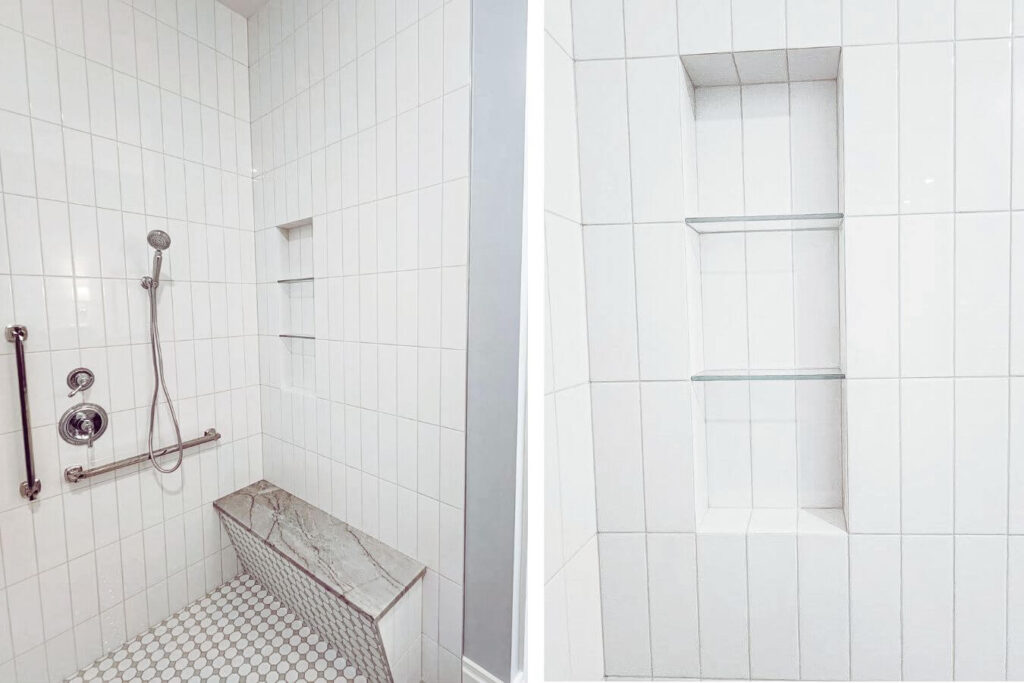
6. Skipping Accessibility Features
Pitfall: Not considering future accessibility needs can limit the long-term usability of the shower. Think ahead – you’ll thank yourself later.
How to Avoid: Plan for Accessibility. Incorporate universal design principles into your tub to shower conversion to ensure accessibility for everyone. Consider the following factors:
- Barrier-Free Entry: Eliminate barriers such as shower curbs or thresholds. A curbless shower floor allows easy access for individuals using wheelchairs or mobility aids.
- Wide Doorways: Ensure the bathroom doorway and shower entrance are wide enough to accommodate wheelchair access, typically a minimum of 32 inches wide.
- Grab Bars: Install sturdy grab bars in strategic locations within the shower area to provide support and assistance for users entering, exiting, and maneuvering inside the shower.
- Shower Seating: Incorporate a fold-down or built-in shower seat to provide a safe and comfortable place for individuals who need to sit while showering.
- Non-Slip Flooring: Choose non-slip flooring materials for the shower area to reduce the risk of slips and falls, especially when the floor is wet.
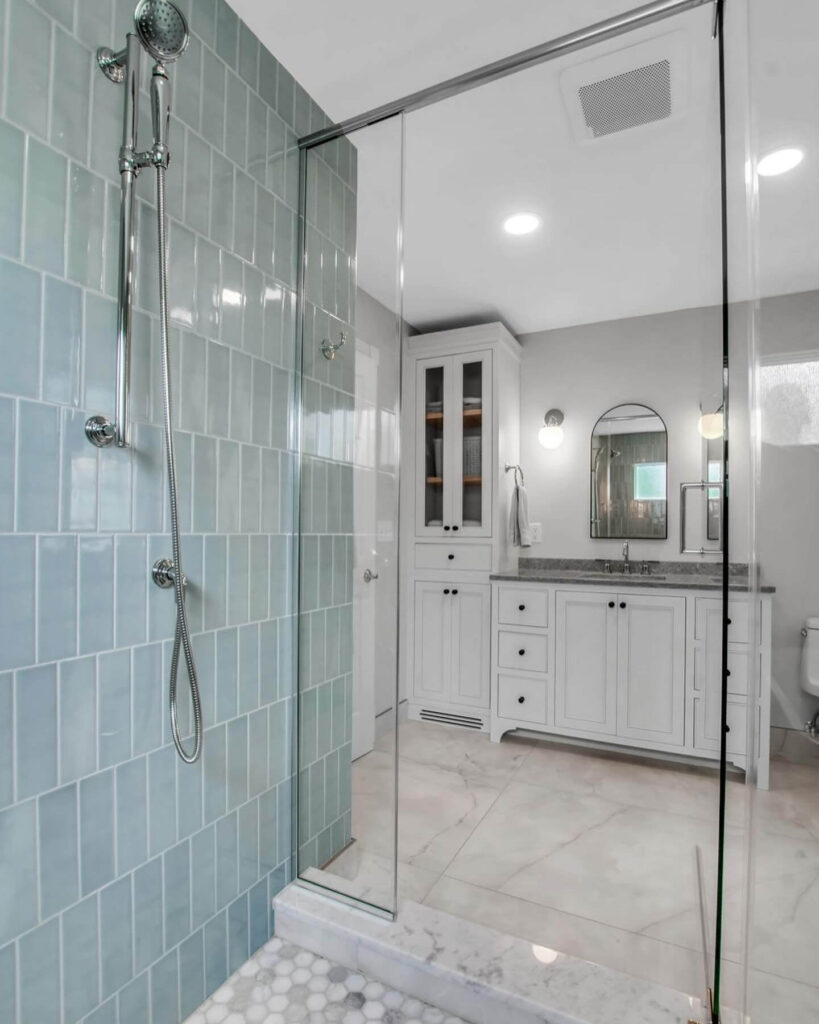
7. Neglecting Aesthetic Consistency
Pitfall: A tub to shower conversion that doesn’t match the rest of the bathroom’s design can look out of place and reduce the overall aesthetic appeal. Your bathroom should feel cohesive, not like a mismatched puzzle.
How to Avoid:
- Consult a Designer: Work with a designer or the conversion company’s design team to ensure the new shower complements the existing bathroom decor.
- Coordinate Colors and Styles: Select tiles for the shower walls and floor that harmonize with the overall color scheme and theme of the bathroom. Opt for fixtures, such as faucets, showerheads, and handles, that match or complement each other in style and finish. Ensure that cabinetry, countertops, and shelving units blend seamlessly with the new shower design.
- Consider Architectural Details: Pay attention to architectural details and transitions within the bathroom space. Ensure that transitions between different flooring materials or between the shower and surrounding areas are smooth and visually appealing.
8. Overlooking Project Timeline
Pitfall: Unrealistic timelines can lead to frustration and rushed work. No one wants a project dragging on forever.
How to Avoid:
- Discuss Timelines Upfront: Have a clear discussion about the expected project timeline and include it in the contract.
- Define Clear Milestones: Establish clear milestones and objectives for each phase of the tub to shower conversion project. Outline specific tasks such as demolition, plumbing adjustments, waterproofing, tile installation, and fixture installation.
- Consider Lead Times: Plan ahead for ordering materials, fixtures, and accessories with significant lead times. Ensure that items are delivered on schedule to avoid delays in the construction timeline.
- Plan for Delays: Understand that some delays may occur and have a plan in place to manage them. Patience is key. Be realistic about the time required for completing the tub to shower conversion. Understand that certain factors, such as structural changes or unexpected repairs, may extend the timeline.
9. Ignoring the Importance of a Written Contract
Pitfall: Relying on verbal agreements can lead to misunderstandings and unfulfilled promises. Don’t let a handshake deal leave you in the lurch.
How to Avoid:
- Get Everything in Writing: Ensure all details, including costs, timelines, materials, and warranties, are outlined in a written contract with your tub to shower conversion company.
- Change Orders: Include provisions for handling change orders or modifications to the original contract. Outline the process for requesting changes, approving additional costs, and updating the contract accordingly.
- Insurance and Liability Coverage: Verify that the tub to shower conversion company carries adequate insurance coverage, including general liability insurance and workers’ compensation insurance. Ensure that you understand your rights and responsibilities in case of property damage or accidents during the renovation.
- Change Orders: Include provisions for handling change orders or modifications to the original contract. Outline the process for requesting changes, approving additional costs, and updating the contract accordingly.
- Review the Contract: Read the contract carefully and ask questions about any unclear terms before signing. Clarity is crucial.
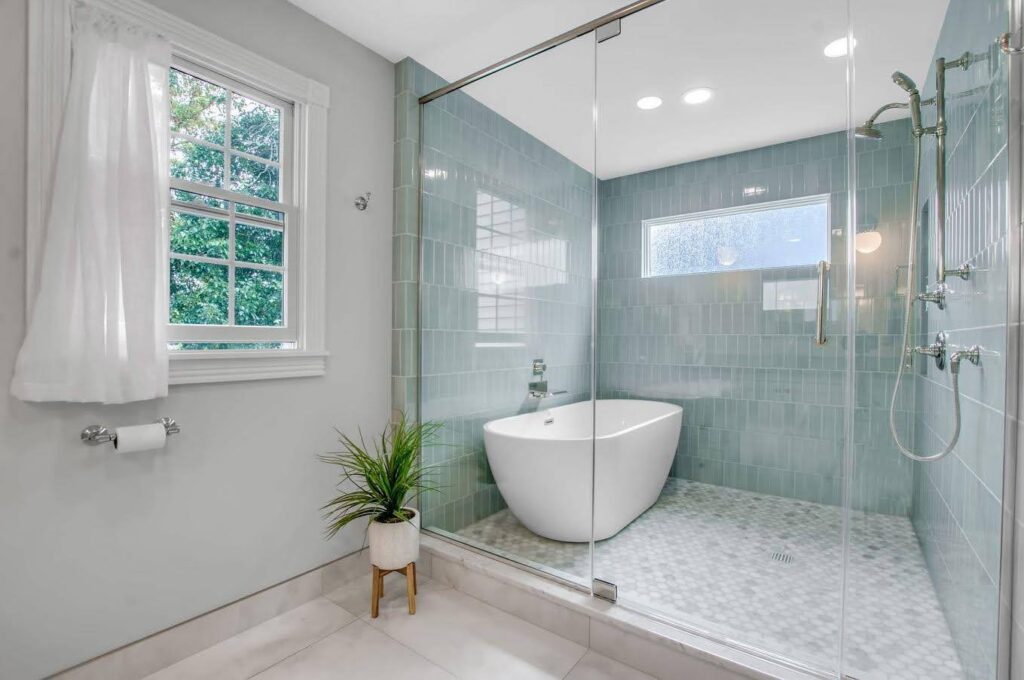
10. Failing to Verify Warranty and Post-Installation Support
Pitfall: Not understanding the warranty terms can leave you unprotected if issues arise after the project is completed.
How to Avoid:
- Clarify Warranty Details: Ask about the warranty on both materials and workmanship from your tub to shower conversion companies.
- Duration: Determine how long the warranty period lasts for different components of the renovation, such as plumbing work, waterproofing, tile installation, and fixtures.
- Coverage: Understand what is covered under the warranty, including defects in workmanship, product failures, and installation issues. Verify any exclusions or limitations that may apply.
- Conditions: Review the conditions for warranty claims, such as proper maintenance requirements or restrictions on modifications by unauthorized personnel.
- Duration: Determine how long the warranty period lasts for different components of the renovation, such as plumbing work, waterproofing, tile installation, and fixtures.
- Check Post-Installation Support: Ensure the company offers reliable post-installation support for any future issues or adjustments. This may include:
- Follow-Up Inspections: Ask if the company conducts follow-up inspections or evaluations after completing the tub to shower conversion to ensure everything is functioning correctly.
- Maintenance Tips: Request maintenance guidelines or recommendations to prolong the lifespan of your new shower and prevent common issues.
- Customer Service: Verify how to contact customer service or support for assistance with warranty claims or questions after the project is finished.
- Follow-Up Inspections: Ask if the company conducts follow-up inspections or evaluations after completing the tub to shower conversion to ensure everything is functioning correctly.
Conclusion
Avoiding these common mistakes can help ensure a smooth and successful tub to shower conversion. By being proactive, thoroughly researching tub to shower conversion companies, and planning carefully, you can achieve the bathroom transformation you desire with confidence and peace of mind. Remember, knowledge is power – and in this case, it’s the key to your dream bathroom!
Ready to start your tub to shower conversion with confidence? Visit our TBrothers Renovations bathroom remodeling page to learn more about our services and contact us for an estimate today. Ensure your bathroom renovation meets the highest standards of quality and reliability with TBrothers Renovations.
Service Areas: All Western New York, including Buffalo, Amherst, Williamsville, Clarence, Kenmore, Tonawanda, Grand Island, Lancaster, Depew, Cheektowaga, West Seneca, Akron, Elma, Wheatfield, Lockport, Lewiston, and Niagara Falls.
